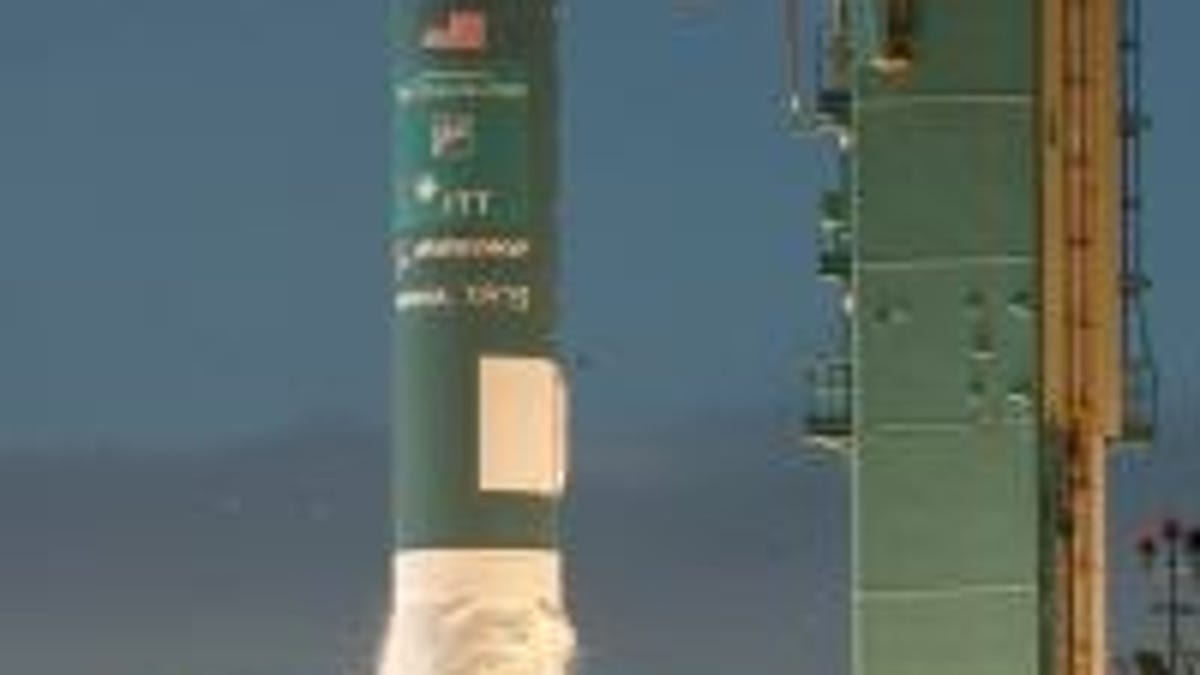A new space race: Bing vs. Google
Last year, Google sponsored the GeoEye-1 satellite launch. This year, it's Microsoft's turn with DigitalGlobe's WorldView-2.

In 2008, Google got its logo on the rocket launching the GeoEye-1 satellite for collecting space-based imagery. This year, it's Microsoft's turn.
The Bing logo appeared on the side of a Boeing Delta II 7920 rocket that launched DigitalGlobe's new WorldView-2 satellite last week from Vandenberg Air Force Base in California. But where Google got sole online rights to the GeoEye-1 imagery, Microsoft will be sharing access to WorldView-2 images with Google, a Digital Globe representative said.
Another sponsor of the rocket is Nokia, whose Navteq subsidiary also supplies digital maps.
Bing today offers aerial and satellite imagery that looks straight down on some locations and a birds'-eye view that gives an angled view. Still, Microsoft touted its DigitalGlobe partnership as greatly expanding what's available online.
"We now have access to one of the highest resolution global satellite imagery and aerial photography collections (460 million sq. km. + 1 million sq. km. per day moving forward) through a deal we've just struck with DigitalGlobe," said Microsoft's Chris Pendleton in a blog post. "We'll finally be able to backfill areas around the world where people have come to my blog and complained about Virtual Earth not having good imagery or photos in their countries--Poland, Hungary, Russia, Taiwan, Mexico, to name a few--I've heard you loud and clear. And, now, we're fixing that problem."
Google, which already had a DigitalGlobe partnership, was more understated, merely offering congratulations on the launch in a blog post Monday.
In the last year, though, Google slurped up a lot of GeoEye-1 imagery--about 500,000 square kilometers, according to Google spokeswoman Elaine Filadelfo. By comparison, Texas is about 678,000 square kilometers.
="" width="425" height="349">Among new areas in Google Earth and Google Maps photographed by GeoEye-1 are Zhangye, China; Perth, Australia; Tangier, Morocco; Como, Italy; Dublin, Ireland; Curitiba, Brazil; Leduc, Canada; Kolwezi, Democratic Republic of Congo; and the formerly closed city of Sevastopol, Ukraine.
DigitalGlobe expects WorldView-2 will double the company's capacity to collect imagery. The satellite's top resolution can detect features as small as 0.46 meter, though U.S. government regulations permit general commercial sales of imagery only of 0.5-meter resolution.
Ball Aerospace built the satellite and, as with GeoEye-1, ITT's Space Systems Division supplied its image sensor.
Launching satellites is an expensive business, but there's at least some funding available: GeoEye secured $400 million in a sale of debt last week.

